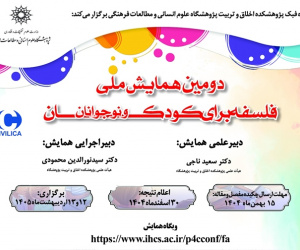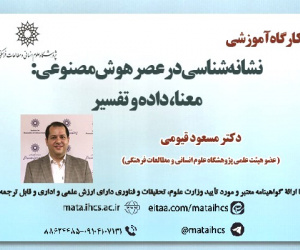گستره فرهنگ در دست بافته های پرویز تناولی از فضای حقیقی تا فضای استعاری
آرشیو
چکیده
پرویز تناولی از مهم ترین هنرمندان ایرانی و از پیشروان مکتب سقاخانه است. مهم ترین ویژگی آثار او استفاده از عناصر هنر ایرانی و شرقی در امتداد هنر جهانی است. از جمله آثار تناولی در راستای ویژگی گفته شده فرش های اوست که نشان از پژوهش از سویی و استفاده از یافته های پژوهش از سوی دیگر برای بیان هنری است. این فرش ها می توانند دو گونه فضا را برای مخاطب بازنمایی کنند: فضای حقیقی جغرافیایی که نشانگر ویژگی های فرش هر منطقه از ایران است و فضای استعاری که پیوند ژرفی با اسطوره، ادبیات و اندیشه ایرانی دارد. پرسشی که می توان در این راستا مطرح نمود این است که چگونه این دو فضای حقیقی و استعاری معناسازی می کنند و عرصه گفتگو و تعامل بینافرهنگی می گردند؟ تحلیل ما بر پایه آرای نظری یوری لوتمان، نشانه شناس روسی مکتب تارتو- مسکو است که با بهره بردن از تعریف فرهنگ، سپهر معنایی یا نشانه ای را تعریف کرده که برای توضیح کارکرد انواع زبان های کلامی و غیرکلامی ضروری به نظر می رسد. این سپهر هم شرط و هم نتیجه گسترش فرهنگ است و وابسته به درک فضاهای مختلف از جمله حقیقی و استعاری می باشد. ما نیز برای تحلیل فرش های پرویز تناولی از دیدگاه لوتمان و هم حضوری لایه های معنایی در سپهر نشانه-معنایی بهره برده ایم و به این نتیجه دست یافته ایم که فرش های تناولی سپهر معنایی جدیدی خلق کرده اند که شبکه ای از تعاملات همه جانبه بین فرهنگ و سنت و ارزش های فرهنگی-اجتماعی جامعه ایرانی از سویی و پیوند با جامعه فرهنگی-هنری جهانی از سوی دیگر است.The extend of culture in the hand-made of Parviz Tanavoli
Parviz Tanavoli is one of the most important Iranian artists and one of the pioneering figures of the Saqakhaneh School. The most important feature of his works is the use of elements of Iranian and Eastern art along with world art. Among his most notable creations, in line with the mentioned feature, are his carpets, which are a sign of research on the one hand and the use of research findings on the other hand for artistic expression. These carpets can represent two types of space for the audience: the tangible geographical space , which reflects the unique characteristics of carpets from various region of Iran and the metaphorical space that has a deeply rooted in Iranian mythology, literature and philosophical thought. The question that can be raised in this regard is: how these two real and metaphorical spaces create meaning and become the arena of intercultural dialogue and interaction? Our analysis draws upon the theoretical opinions of Yuri Lutman, Russian semiotician from the Tartu-Moscow school. Lotman’s definition of culture encompasses a semiosphere that is essential for elucidating the functions of both verbal and non-verbal languages. This sphere serves as both a condition and an outcome of cultural development, intricately linked to our understanding of various spaces, both real and metaphorical. In examining Tanavoli’s carpets through Lotman's point of view, we explore the co-presence of semantic layers in this semiosphere, our resultat reveals that the Tanavoli’s carpets have created a new semiosphere,








